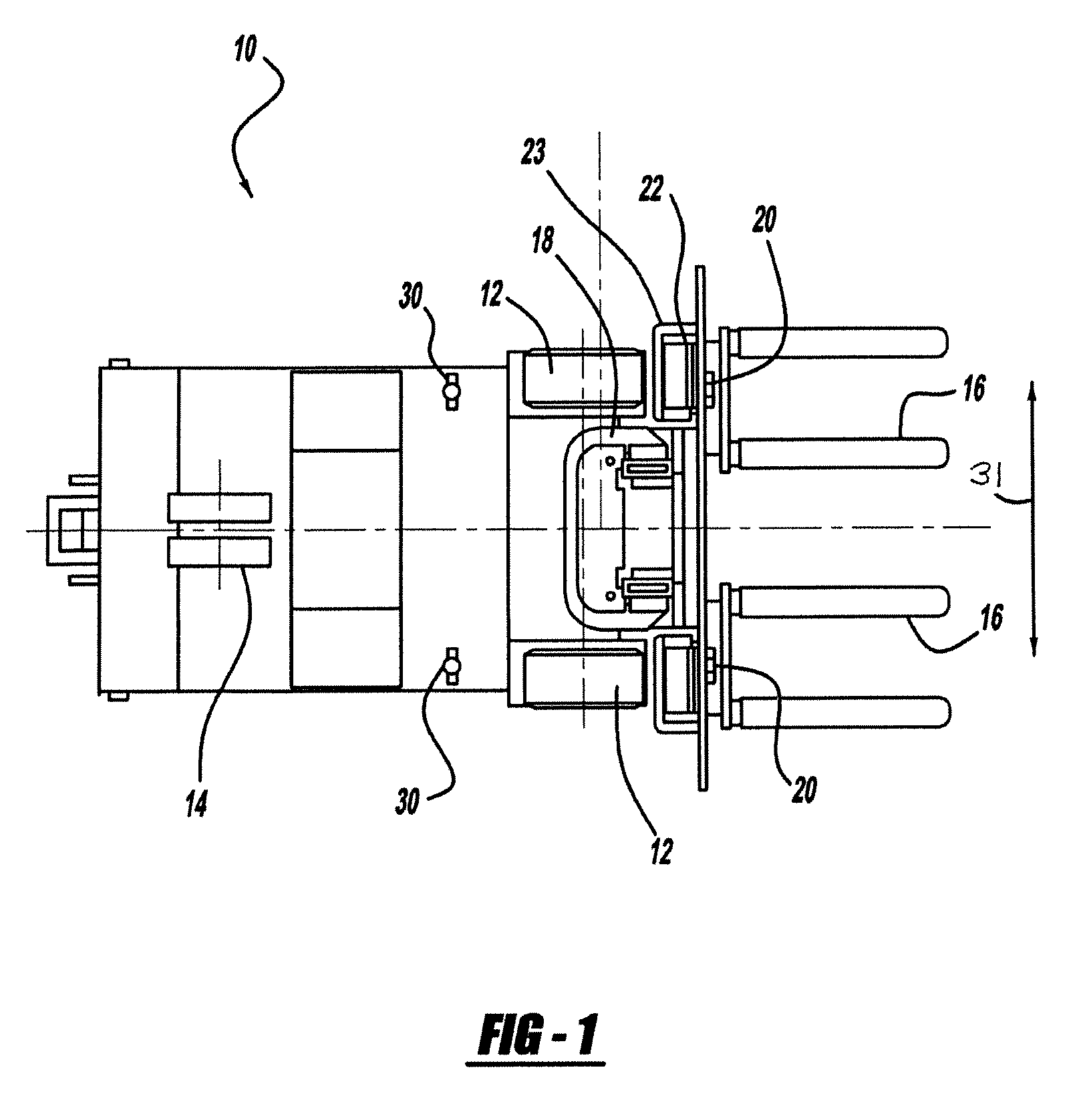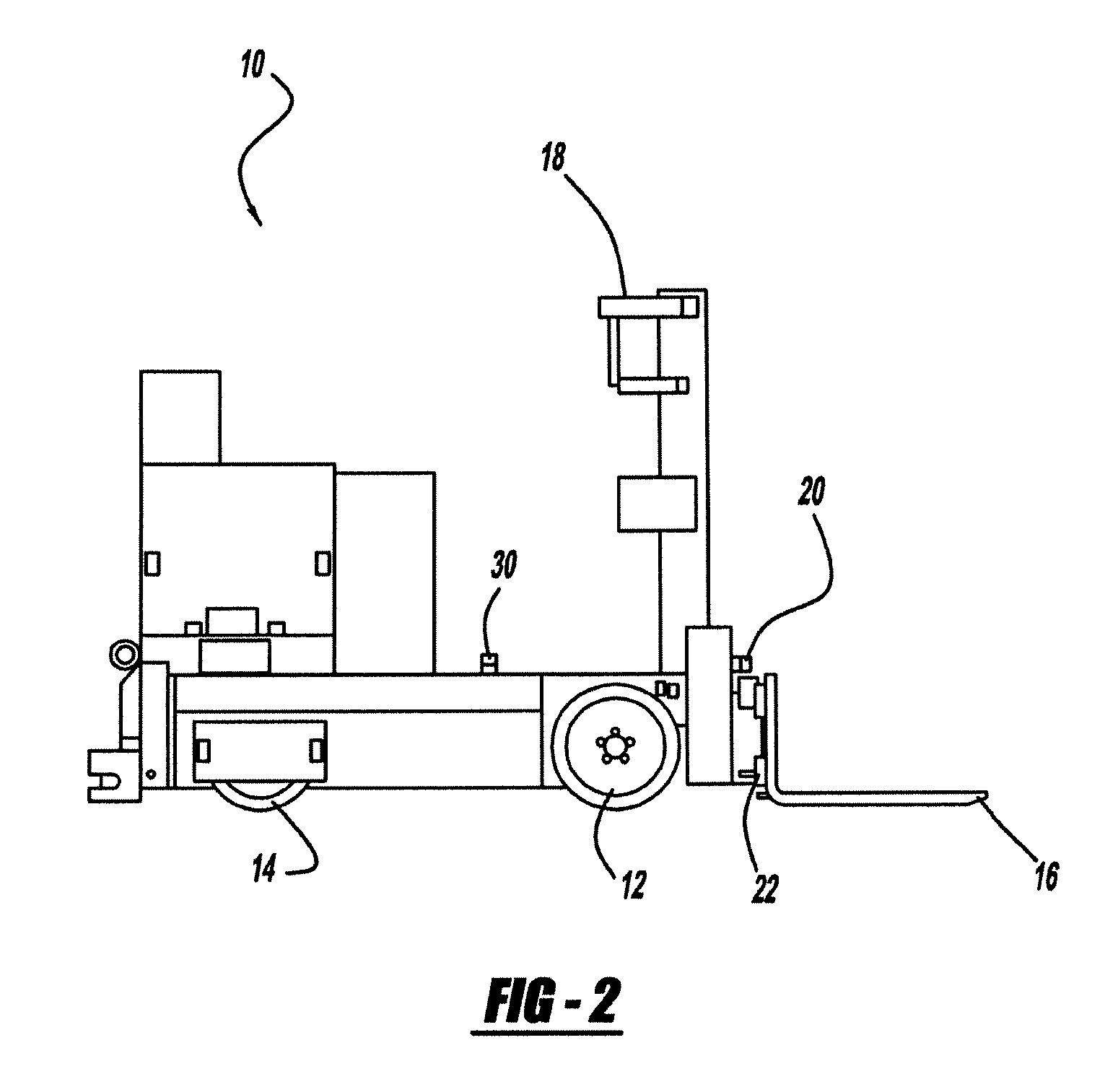For example, inertial guidance is susceptible to tracking errors, where the travel distance and direction measured by the AGV differs from the actual distance and direction of travel.
This type of
system is susceptible to obstruction of markers and, most notably, requires markers to be present in any environment of travel.
One difficulty associated with the automatic loading and unloading of a transport is the variable position of the transport in relation to the loading dock.
This manual positioning results in an unknown variability in the position of the transport.
As a driver positions a transport such as a trailer at the loading dock, he or she may be unable to perfectly square the trailer with the dock door.
Since the angle is unknown and can vary at each positioning at the dock, an AGV cannot effectively guide and deliver loads in the trailer, unless the
skew is adjusted or the AGV has the capability of detecting and compensating for trailer
skew.
The prior art has addressed this problem by using skid plates to position the transport in relation to the loading docks; however, this is a costly and inefficient process.
In loading wider loads by AGVs, an offset as little as one inch may cause problems during the loading process.
Many variances in the positioning of the transport, as well as between the transport and the loading dock, may cause difficulties in the AGV loading the transport and, in particular, the end of the transport.
The difficulty associated with automatic loading and unloading of a transport is that the AGV must be able to overcome the difference in height between the transport and the dock.
Furthermore, the height of a particular transport is not static; as the transport is loaded the suspension will compress, resulting in a change in the height of the transport.
Any contact between the load and the transport will cause problems in the loading of the transport.
The prior art has addressed this problem by using hydraulic or other types of jacks to stabilize and level the transport; however, this is another costly and inefficient process.
The variability in position of the transport may prohibit the automatic loading of the transport, and almost certainly will reduce its efficiency.
Other problems also occur, such as loading the last few pallets near the door of the transport.
The transition between the two may require a steep incline or decline of the dock ramp between dock and transport, which can cause guidance difficulties and end of trailer loading difficulties.
For example, an AGV that uses a
laser guidance system may lose the target as it moves up or down to enter the transport, due to the fact that the
laser will be pointing either above or below the target.
The difficulty with end-of-trailer loading for the above described transport and transport loading area facilities is that if the AGV is not at an equal angle to the transport floor, such as the majority of the AGV being situated on the dock ramp or loading facility floor, it may be difficult for the AGV to lower its load to the transport floor and then easily remove its forks from the
pallet pockets.
More specifically, if the transport floor is not aligned both vertically and angularly with the loading facility floor or dock ramp, it may be difficult to withdraw the forks from the pockets on the pallets as the tip of the fork engages one of the top and bottom, and the portion of the fork nearest to the AGV engages the other of the top and bottom.
Despite the use of guidance systems to control travel of an AGV, their use in the process of loading and unloading loads from a transport has yet to be satisfactorily addressed in the art.
 Login to View More
Login to View More  Login to View More
Login to View More 


